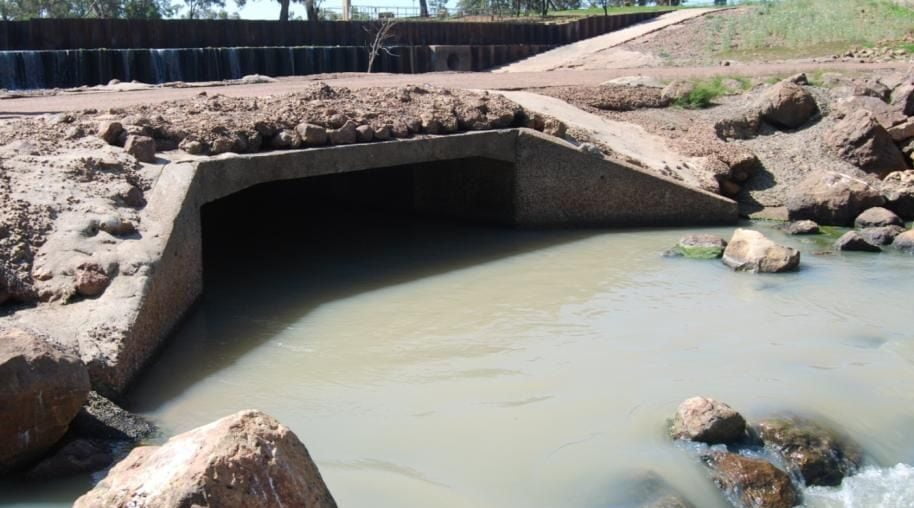Barriers such as dams, weirs, levees, causeways, culverts and road crossings can stop the natural movement patterns of many native fish species within the Basin. Such barriers may prevent native fish from completing key components of their lifecycle. State/Territory agencies have recognised more than 4000 licensed barriers in the Murray-Darling Basin, although very few of these have had their impact on native fish neutralised through implementation of engineering works or operating procedures (see map). Additionally, the majority of actions addressing fish passage problems have focused on provision of upstream migration for fish.
The downstream movement of fish is a less studied topic. A workshop was held to review current knowledge on the issue based on local and international research, as well as practical management experience of the downstream movement and dispersal of fish. In particular, the workshop considered impacts such as disruptions to life cycles and natural movement patterns caused by in-stream barriers and other water management practices. The workshop also considered the issues of downstream movement of eggs, larvae, juveniles and adult fish.
Findings:
Six keynote papers were presented on issues relating to downstream movement of fish and a series of state/territory updates on the issue. In summary, workshop participants concluded that impeded downstream movement of eggs, larvae, juvenile and adult fish is contributing to the following problems:
- Removal of significant numbers of eggs, larval, juvenile and adult fish from the river population through irrigation and other water diversions;
- High levels of mortality due to entrainment/diversion into unfavourable habitats such as turbines or irrigation channels;
- Ongoing declines of native fish communities resulting in reduced regional and Basin-wide economic output, and compromised social and cultural values (e.g. fishing, tourism)
- Ongoing declines of native fish communities enabling the expansion of alien fish populations;
- Increasing vulnerability of isolated native fish populations making recovery after unpredictable events/catastrophes difficult; and,
- Ongoing reduction of genetic diversity/altered traits through restricted access to spawning sites, limited population size and reduced capacity for egg/larval stages to drift.
Six goals for addressing downstream movement were identified (in priority order) :
- Rehabilitate populations of native fish;
- Legitimise downstream movement and abstraction as issues for native fish conservation;
- Restore downstream movement of native fish;
- Prevent diversions of native fish from the riverine ecosystem;
- Improve understanding of downstream movement; and,
- Ensure existing structures are operated and maintained to maximise upstream and downstream native fish passage.
Key messages:
- Whilst most effort to restore fish passage had focused on meeting a need to travel upstream, evidence indicates that barriers can restrict downstream movement as well.
- Impediments to downstream movement can have serious negative consequences for fish populations, affecting all stages of the lifecycle.
- Water extraction activities (pumping, irrigation channels) can remove/divert large numbers of fish larvae and juveniles from riverine habitats, usually with little possibility of return.
